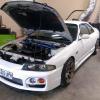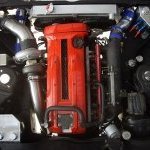R33 Rb30 Conversion
Announcements
-
Similar Content
-
Latest Posts
-
Got the shell, doors and rear flares painted at work, now I can start putting it together.
-
Update time. Quit my job three years ago that i was at for 14 years after getting sick of watch stupid management decisions and having to deal with a continuous stream of HR managers that hate people. I was lucky enough to get a job at Southern Rod and Custom in the assembly area. So i've been putting other people's car together and thought it's time to get back into mine. Some photos of work.
-
Hopefully someone reads this tonight.. reying to find out how far in we need to hammer the manual spigot in? All the way in to the end.. or flush with the front? Or inside my few mm?
-
Thanks Duncan , they are the akebono calipers , for discs I might just look at getting the same size but possibly slotted units.
-









Recommended Posts
Create an account or sign in to comment
You need to be a member in order to leave a comment
Create an account
Sign up for a new account in our community. It's easy!
Register a new accountSign in
Already have an account? Sign in here.
Sign In Now